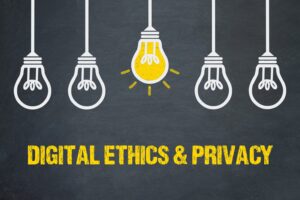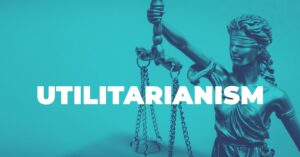
Privacy Ethical Issues
Listing Privacy Ethical Issues
Ethical issues that involves the right of individuals or groups to control or limit access to their personal or sensitive information are commonly referred to as privacy ethical issues. Privacy can be applied to various domains and contexts, such as health care, education, finance, social media, and security. It can also be challenged or violated by various actors or factors, such as technology, government, business, or society. Here are some of the main ethical issues with privacy:
Consent and choice: Privacy asserts the ability to consent or decline whether to share and to choose how their information is used or disclosed. However, consent and choice can be undermined by factors such as lack of awareness, information asymmetry, power imbalance, coercion, manipulation, or deception.
Transparency and accountability: Privacy asserts the right to know who collects, processes, and uses their information, for what purposes, and with what safeguards. However, transparency and accountability can be compromised by factors such as complexity, opacity, secrecy, or negligence.
Security and protection: Privacy asserts that their information is secure and protected from unauthorized or malicious access, use, or disclosure. However, security and protection can be breached by factors such as hacking, theft, loss, or corruption.
Accuracy and quality: Privacy asserts the right to ensure that their information is accurate and complete. However, accuracy and quality can be affected by factors such as errors, biases, inconsistencies, or incompleteness.
Access and control: Privacy requires that individuals or groups have the right to access and control their information. However, access and control can be denied or limited by factors such as legal restrictions, technical barriers, or organizational policies.
Benefit and harm: Privacy asserts the right to benefit from their information and to avoid harm from its misuse. However, benefit and harm can be difficult to measure or balance by factors such as uncertainty, unpredictability, or trade-offs.
Equality and fairness: Privacy requires that individuals or groups have the right to equal and fair treatment regarding their information. However, equality and fairness can be violated by factors such as discrimination, prejudice, stereotyping, or exclusion.
Dignity and respect: Privacy asserts the right to dignity and respect regarding their information. However, dignity and respect can be undermined by factors such as humiliation, degradation, or exploitation .
Trust and confidence: Privacy requires that individuals or groups have the right to trust and confidence regarding their information . However, trust and confidence can be eroded by factors such as deception, dishonesty, or betrayal .
Values and ethics: Privacy asserts the right to values and ethics regarding their information . However, values and ethics can be challenged or conflicted by factors such as cultural differences, moral dilemmas, or social norms
Are you a technical, business or legal professional who works with technology adoption? Do you want to learn how to apply ethical frameworks and principles to your technology work and decision-making, understand the legal implications and challenges of new technologies and old laws, and navigate the complex and dynamic environment of technology innovation and regulation? If so, you need to check out this new book: Ethics, Law and Technology: Navigating Technology Adoption Challenges. This book is a practical guide for professionals who want to learn from the experts and stay updated in this fast-changing and exciting field.









